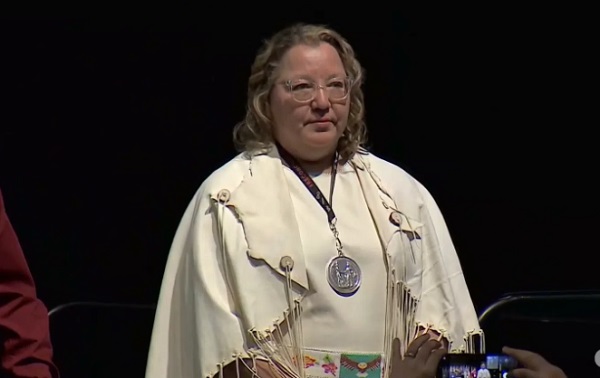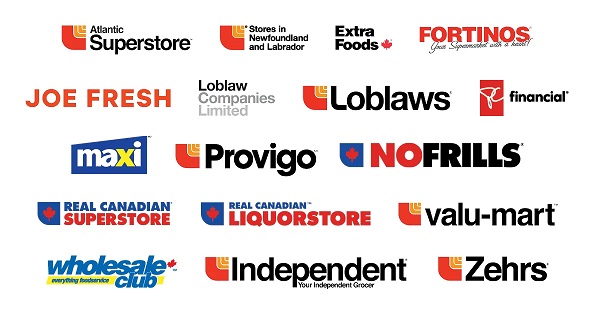Frontier Centre for Public Policy
How the new National Chief can restore the legitimacy of the AFN

Newly elected national chief of the Assembly of First Nations (AFN), Cindy Woodhouse
From the Frontier Centre for Public Policy
At times, we lose sight of the fact that not discovering bodies would be a profoundly positive outcome for First Nations and for Canada. This could help reconciliation efforts and bring peace to First Nation communities, particularly for Indigenous individuals of Christian faith.
Cindy Woodhouse, the newly elected national chief of the Assembly of First Nations (AFN), has a lot of work to do as she sets out to unify the fractured organization and rebuild its legitimacy in the eyes of First Nations across Canada.
To begin, the new national chief should forge her own independent path. Instead of immediately prioritizing internal reforms, she could facilitate reconciliation within First Nation communities by showing leadership in addressing ongoing, challenging conversations that remain unresolved in First Nation communities right now.
Although engaging in these discussions will subject her to criticism, leading from the top on difficult topics will often do that.
The first topic of conversation is the matter of unmarked graves near residential schools.
In 2021, the Tk’emlups te Secwepemc Indigenous community in British Columbia made headlines by announcing the discovery of 215 unmarked graves, believed to belong to children, through ground-penetrating radar. The allegation sent shockwaves across Canada and around the world. Mainstream media extensively covered these allegations, creating impressions of mass murder of children and human rights atrocities.
In reaction to these allegations, churches, especially Roman Catholic ones, became targets of vandalism and arson. Some individuals on reserves expressed their anger by targeting churches within their communities. Records indicate that there were over 60 incidents involving churches in 2021 alone.
Regrettably, churches affiliated with First Nation communities are still reporting attacks on their properties. At last count, some alternative media outlets are reporting a total of 100 incidents of arson and vandalism on churches. Just recently, video footage revealed an attempted arson on a Roman Catholic church in Regina, which only conservative outlets seemed to cover.
The CBC – three years late to the issue – ran an investigative story on the incidents that only seemed to serve as a platform for anti-Christian bigotry and to provide justification for the indefensible actions.
At the time, National Chief Perry Bellegarde – to his credit – condemned these acts and called for an end to them. Other prominent Indigenous voices also spoke up.
However, it’s crucial to admit that these claims of unmarked graves remain unverified and lack concrete evidence. Without excavation or exhumed bodies, it’s impossible to conclusively determine whether these are indeed human remains.
Indigenous communities in Canada must openly express this sentiment, and the national chief of the AFN is a prominent voice to convey this message.
No one denies that children died at these institutions. Tuberculosis took the lives of thousands of indigenous children who attended residential schools, day schools, or no school at all. It was a major killer of Indigenous people at the time.
However, this issue is an open and festering wound, particularly for many Indigenous communities. It is also a stain on Canadians and our collective history. Even today, Christian places of worship within Indigenous communities are subjected to reprehensible attacks.
Woodhouse must lead the AFN in addressing this difficult discussion by stating the truth. There is no evidence to substantiate the allegations of widespread child murder, and it’s time for Indigenous communities to acknowledge this and focus on healing their communities.
Conservative Leader Pierre Poilievre has stated that Parliament should launch a comprehensive investigation into the allegations of unmarked graves at the Kamloops Indian Residential School. Woodhouse should support his initiative and ensure the co-operation of all political parties. This would provide closure to many Indigenous families.
At times, we lose sight of the fact that not discovering bodies would be a profoundly positive outcome for First Nations and for Canada. This could help reconciliation efforts and bring peace to First Nation communities, particularly for Indigenous individuals of Christian faith.
No First Nation leader should want this festering wound to remain exposed.
Thankfully, the next conversation Woodhouse must address is not as difficult as the first.
As the debate rages over the carbon tax across Canada, it’s often overlooked that these taxes deeply impact First Nations. The federal government’s centralized energy policies are harming Indigenous communities. Imposing ‘clean energy’ mandates on many First Nations people who rely heavily on diesel and lack alternative options is simply not feasible for many communities. Woodhouse has said she will support a review of the impacts of the carbon tax on First Nations, but she must do more and vehemently oppose the government’s whole green agenda.
She must lead the AFN in rejecting all unnecessary and arbitrary Net Zero and clean energy targets. The government’s ‘Just Transition’ strategy – leaving resources untapped – is a direct threat to energy-producing First Nations. First Nations should have the opportunity to thrive in the energy sector just like any other community.
Both these conversations will be divisive and polarizing, but the AFN must lead them because the lack of resolution is harming Indigenous communities.
Joseph Quesnel, is a Senior Research Fellow with the Frontier Centre for Public Policy.
Censorship Industrial Complex
Ottawa’s New Hate Law Goes Too Far

From the Frontier Centre for Public Policy
By Lee Harding
Ottawa says Bill C-9 fights hate. Critics say it turns ordinary disagreement into a potential crime.
Discriminatory hate is not a good thing. Neither, however, is the latest bill by the federal Liberal government meant to fight it. Civil liberties organizations and conservative commentators warn that Bill C-9 could do more to chill legitimate speech than curb actual hate.
Bill C-9 creates a new offence allowing up to life imprisonment for acts motivated by hatred against identifiable groups. It also creates new crimes for intimidation or obstruction near places of worship or community buildings used by identifiable groups. The bill adds a new hate propaganda offence for displaying terrorism or hate symbols.
The Canadian Civil Liberties Association (CCLA) warns the legislation “risks criminalizing some forms of protected speech and peaceful protest—two cornerstones of a free and democratic society—around tens of thousands of community gathering spaces in Canada.” The CCLA sees no need to add to existing hate laws.
Bill C-9 also removes the requirement that the Attorney General consent to lay charges for existing hate propaganda offences. The Canadian Constitution Foundation (CCF) calls this a major flaw, noting it removes “an important safeguard for freedom of expression that has been part of Canada’s law for decades.” Without that safeguard, decisions to prosecute may depend more on local political pressures and less on consistent national standards.
Strange as it sounds, hatred just will not be what it used to be if this legislation passes. The core problem begins with how the bill redefines the term itself.
Previously, the Supreme Court of Canada said hatred requires “extreme manifestations” of detestation or vilification that involve destruction, abhorrence or portraying groups as subhuman or innately evil. Instead, Bill C-9 defines hatred as “detestation or vilification,” stronger than “disdain or dislike.” That is a notably lower threshold. This shift means that ordinary political disagreement or sharp criticism could now be treated as criminal hatred, putting a wide range of protected expression at real risk.
The bill also punishes a hateful motivation more than the underlying crime. For example, if a criminal conviction prompted a sentence of two years to less than five years, a hateful motivation would add as much as an additional five years of jail time.
On paper, most Canadians may assume they will never be affected by these offences. In practice, the definition of “hate” is already stretched far beyond genuine threats or violence.
Two years ago, the 1 Million March for Children took place across Canada to protest the teaching of transgender concepts to schoolchildren, especially the very young. Although such opposition is a valid position, unions, LGBT advocates and even Newfoundland and Labrador Conservatives adopted the “No Space For Hate” slogan in response to the march. That label now gets applied far beyond real extremism.
Public pressure also shapes how police respond to protests. If citizens with traditional values protest a drag queen story hour near a public library, attendees may demand that police lay charges and accuse officers of implicit hatred if they refuse. The practical result is clear: officers may feel institutional pressure to lay charges to avoid being accused of bias, regardless of whether any genuine threat or harm occurred.
Police, some of whom take part in Pride week or work in stations decorated with rainbow colours in June, may be wary of appearing insensitive or intolerant. There have also been cases where residents involved in home invasion incidents were charged, and courts later determined whether excessive force was used. In a similar way, officers may lay charges first and allow the courts to sort out whether a protest crossed a line. Identity-related considerations are included in many workplace “sensitivity training” programs, and these broader cultural trends may influence how such situations are viewed. In practice, this could mean that protests viewed as ideologically unfashionable face a higher risk of criminal sanction than those aligned with current political priorities.
If a demonstrator is charged and convicted for hate, the Liberal government could present the prosecution as a matter for the justice system rather than political discretion. It may say, “It was never our choice to charge or convict these people. The system is doing its job. We must fight hate everywhere.”
Provincial governments that support prosecution will be shielded by the inability to show discretion, while those that would prefer to let matters drop will be unable to intervene. Either way, the bill could increase tensions between Ottawa and the provinces. This could effectively centralize political authority over hate-related prosecutions in Ottawa, regardless of regional differences in values or enforcement priorities.
The bill also raises concerns about how symbols are interpreted. While most Canadians would associate the term “hate symbol” with a swastika, some have linked Canada’s former flag to extremism. The Canadian Anti-Hate Network did so in 2022 in an educational resource entitled “Confronting and preventing hate in Canadian schools.”
The flag, last used nationally in 1965, was listed under “hate-promoting symbols” for its alleged use by the “alt-right/Canada First movement” to recall when Canada was predominantly white. “Its usage in modern times is an indicator of hate-promoting beliefs,” the resource insisted. If a historic Canadian symbol can be reclassified this easily, it shows how subjective and unstable the definition of a “hate symbol” could become under this bill.
These trends suggest the legislation jeopardizes not only symbols associated with Canada’s past, but also the values that supported open debate and free expression. Taken together, these changes do not merely target hateful behaviour. They create a legal framework that can be stretched to police dissent and suppress unpopular viewpoints. Rest in peace, free speech.
Lee Harding is a research fellow for the Frontier Centre for Public Policy.
Business
Canada Can Finally Profit From LNG If Ottawa Stops Dragging Its Feet

From the Frontier Centre for Public Policy
By Ian Madsen
Canada’s growing LNG exports are opening global markets and reducing dependence on U.S. prices, if Ottawa allows the pipelines and export facilities needed to reach those markets
Canada’s LNG advantage is clear, but federal bottlenecks still risk turning a rare opening into another missed opportunity
Canada is finally in a position to profit from global LNG demand. But that opportunity will slip away unless Ottawa supports the pipelines and export capacity needed to reach those markets.
Most major LNG and pipeline projects still need federal impact assessments and approvals, which means Ottawa can delay or block them even when provincial and Indigenous governments are onside. Several major projects are already moving ahead, which makes Ottawa’s role even more important.
The Ksi Lisims floating liquefaction and export facility near Prince Rupert, British Columbia, along with the LNG Canada terminal at Kitimat, B.C., Cedar LNG and a likely expansion of LNG Canada, are all increasing Canada’s export capacity. For the first time, Canada will be able to sell natural gas to overseas buyers instead of relying solely on the U.S. market and its lower prices.
These projects give the northeast B.C. and northwest Alberta Montney region a long-needed outlet for its natural gas. Horizontal drilling and hydraulic fracturing made it possible to tap these reserves at scale. Until 2025, producers had no choice but to sell into the saturated U.S. market at whatever price American buyers offered. Gaining access to world markets marks one of the most significant changes for an industry long tied to U.S. pricing.
According to an International Gas Union report, “Global liquefied natural gas (LNG) trade grew by 2.4 per cent in 2024 to 411.24 million tonnes, connecting 22 exporting markets with 48 importing markets.” LNG still represents a small share of global natural gas production, but it opens the door to buyers willing to pay more than U.S. markets.
LNG Canada is expected to export a meaningful share of Canada’s natural gas when fully operational. Statistics Canada reports that Canada already contributes to global LNG exports, and that contribution is poised to rise as new facilities come online.
Higher returns have encouraged more development in the Montney region, which produces more than half of Canada’s natural gas. A growing share now goes directly to LNG Canada.
Canadian LNG projects have lower estimated break-even costs than several U.S. or Mexican facilities. That gives Canada a cost advantage in Asia, where LNG demand continues to grow.
Asian LNG prices are higher because major buyers such as Japan and South Korea lack domestic natural gas and rely heavily on imports tied to global price benchmarks. In June 2025, LNG in East Asia sold well above Canadian break-even levels. This price difference, combined with Canada’s competitive costs, gives exporters strong margins compared with sales into North American markets.
The International Energy Agency expects global LNG exports to rise significantly by 2030 as Europe replaces Russian pipeline gas and Asian economies increase their LNG use. Canada is entering the global market at the right time, which strengthens the case for expanding LNG capacity.
As Canadian and U.S. LNG exports grow, North American supply will tighten and local prices will rise. Higher domestic prices will raise revenues and shrink the discount that drains billions from Canada’s economy.
Canada loses more than $20 billion a year because of an estimated $20-per-barrel discount on oil and about $2 per gigajoule on natural gas, according to the Frontier Centre for Public Policy’s energy discount tracker. Those losses appear directly in public budgets. Higher natural gas revenues help fund provincial services, health care, infrastructure and Indigenous revenue-sharing agreements that rely on resource income.
Canada is already seeing early gains from selling more natural gas into global markets. Government support for more pipelines and LNG export capacity would build on those gains and lift GDP and incomes. Ottawa’s job is straightforward. Let the industry reach the markets willing to pay.
Ian Madsen is a senior policy analyst at the Frontier Centre for Public Policy.
-

 Alberta9 hours ago
Alberta9 hours agoThe Recall Trap: 21 Alberta MLA’s face recall petitions
-

 Digital ID2 days ago
Digital ID2 days agoCanada considers creating national ID system using digital passports for domestic use
-

 Fraser Institute2 days ago
Fraser Institute2 days agoClaims about ‘unmarked graves’ don’t withstand scrutiny
-

 Alberta2 days ago
Alberta2 days agoHere’s why city hall should save ‘blanket rezoning’ in Calgary
-

 Business2 days ago
Business2 days agoToo nice to fight, Canada’s vulnerability in the age of authoritarian coercion
-

 Energy16 hours ago
Energy16 hours agoCanada’s future prosperity runs through the northwest coast
-

 illegal immigration9 hours ago
illegal immigration9 hours agoUS Notes 2.5 million illegals out and counting
-

 Energy2 days ago
Energy2 days agoMeet REEF — the massive new export engine Canadians have never heard of









